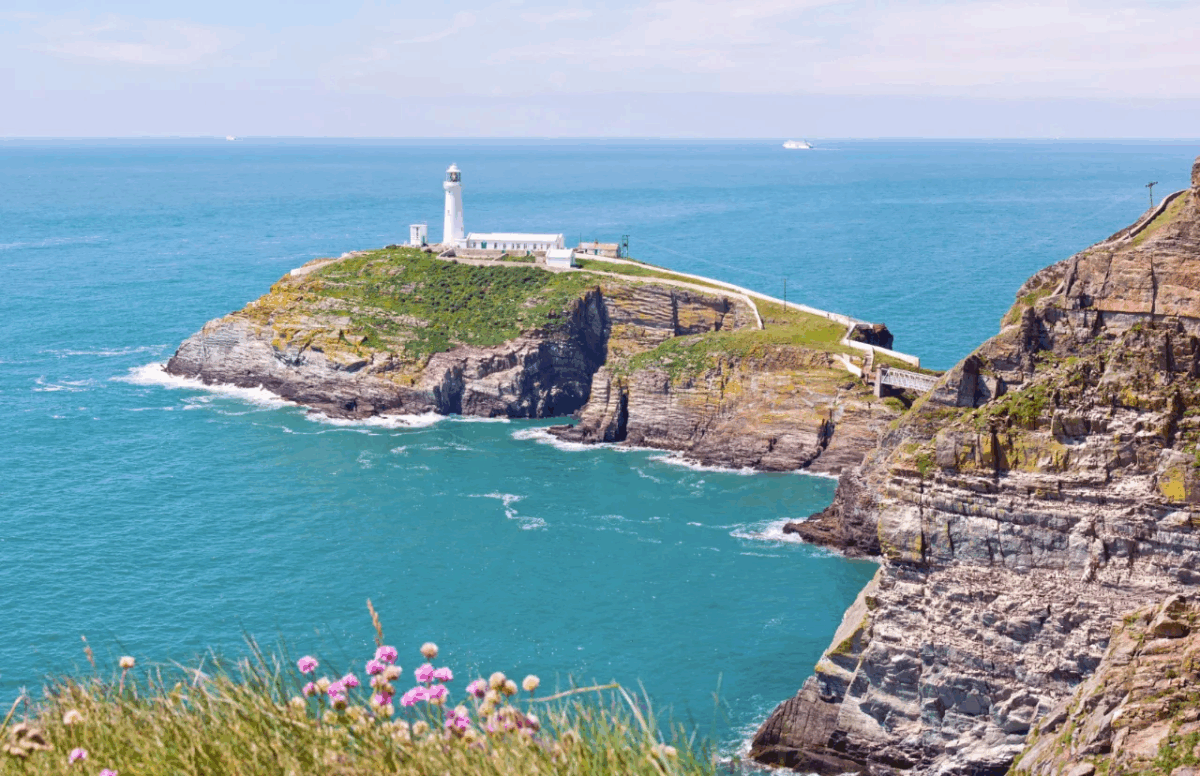As part of our ongoing commitment to support wildlife and conservation, all NHBS staff members can apply for up to three days of paid time during each calendar year to spend on conservation projects of their choice. One of our Technical Advisors, Laura, recently spent a week working at RSPB Ynys Lawd / South Stack, in Anglesey. You can read all about her experience below:
Early in 2025, I applied to be a residential volunteer at RSPB Ynys Lawd / South Stack, Anglesey. I was lucky enough to be accepted and spent an incredible week, in early August, on the reserve.
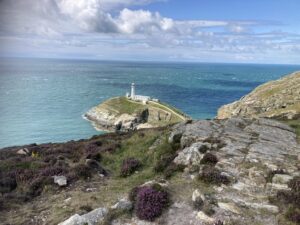
RSPB Ynys Lawd / South Stack is an incredible reserve with swathes of heathland and farmland covering the rugged hills, eventually giving way to rocky sea cliffs. During springtime, large seabird colonies, including Razorbills, Guillemots, Puffins, Fulmars and Kittiwakes, nest in the cliffsides. Choughs and Ravens also call the reserve home, often dancing on the strong sea winds. All three types of Heather can be found there alongside Gorse and the South Stack Fleawort, thought to be endemic to the reserve. Cetaceans journey through the adjoining Irish Sea, with the most common visitors being Risso’s Dolphins, Common Dolphins and Harbour Porpoises.
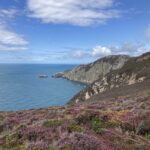
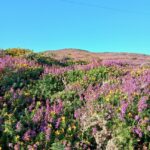
I participated in the National Whale and Dolphin Watch 2025, run by the Sea Watch Foundation. This nine day citizen science event collects data on the distribution of whales, dolphins and porpoises around the UK. From the iconic Ellin’s Tower, we watched the seascape for an hour and noted any cetaceans that came past. The most memorable sighting was a pod of five Risso’s Dolphins with a calf! These distinctive dolphins are among the largest dolphin species, with some adult males growing up to 3.8 m long. Mature Risso’s Dolphins have unique bodily scarring patterns or ‘rake marks’, caused by members of their own species during social interactions, making them easier to individually identify. They’re also amazing acrobats, as we observed when we were lucky enough to spot a lone male doing backflips in the water! If you want to learn more about these enigmatic creatures, you can read our latest issue of British Wildlife.

A lot of my time was spent engaging with visitors and discussing the array of wildlife that inhabits the reserve. From Ellin’s Tower, alongside cetaceans, I observed Grey Seals and seabirds. By August, most of the nesting seabirds had already left, however, the cliffs were by no means deserted. Kittiwakes, Herring Gulls, and Greater Black-backed Gulls were still populating the rocks. Gannets sailed past in the mornings, diving and emerging triumphantly with beaks full of fish. My personal favourite sighting was a juvenile Peregrine Falcon which swooped past the cliffs, honing its hunting skills with impressive dives and turns. Choughs are year-round residents, often announcing their presence with their distinctive “Chee-ow” call and playing in the strong sea winds.
Other days were taken up by roaming the reserve and ensuring it remained clean and free of litter. Handily, they had one of our old-style pond nets, which made it easy to ensure that the wildlife pond was kept free of rubbish.
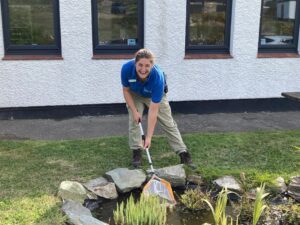
All in all, I had a wonderful week, thanks in part to the beautiful surroundings and wildlife but also to the lovely staff and other volunteers who made me feel so welcome. It’s an experience I would heartily recommend.

